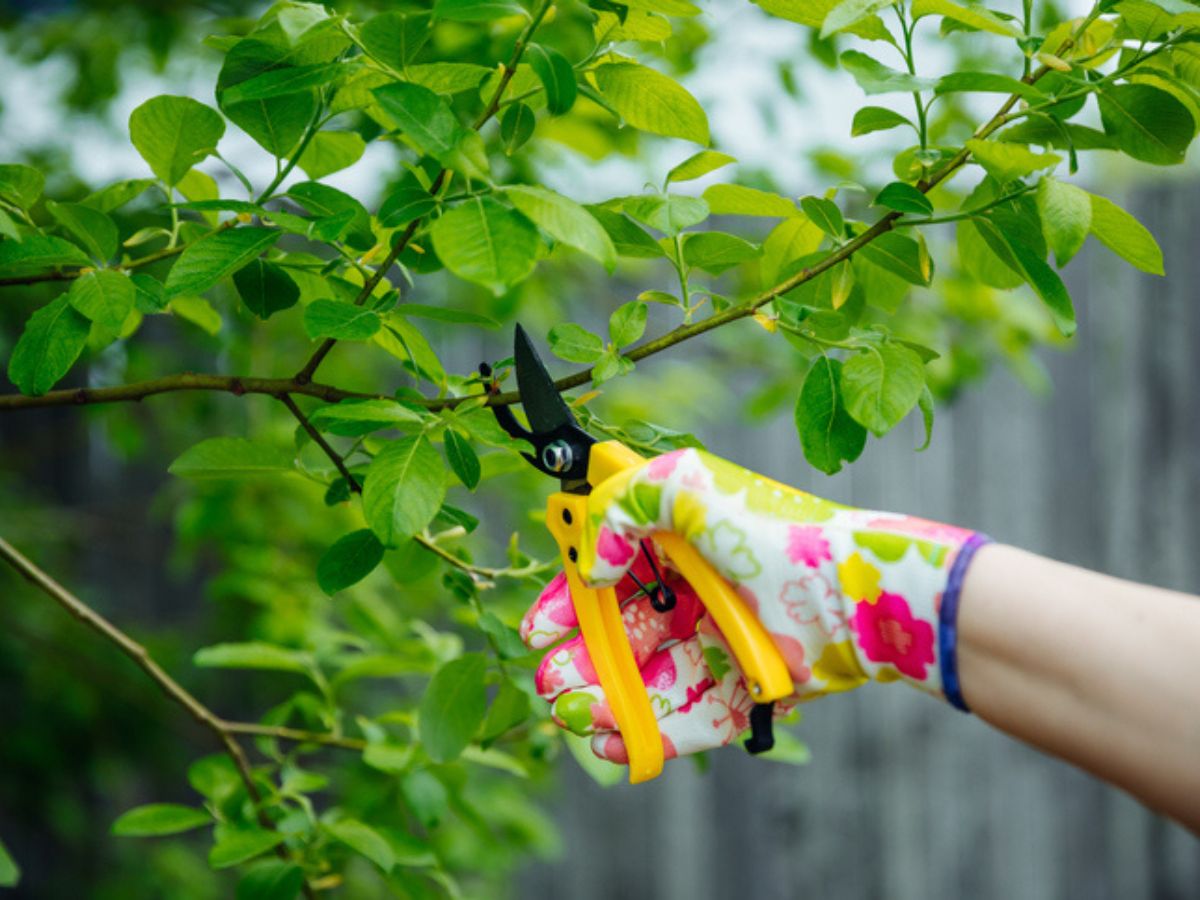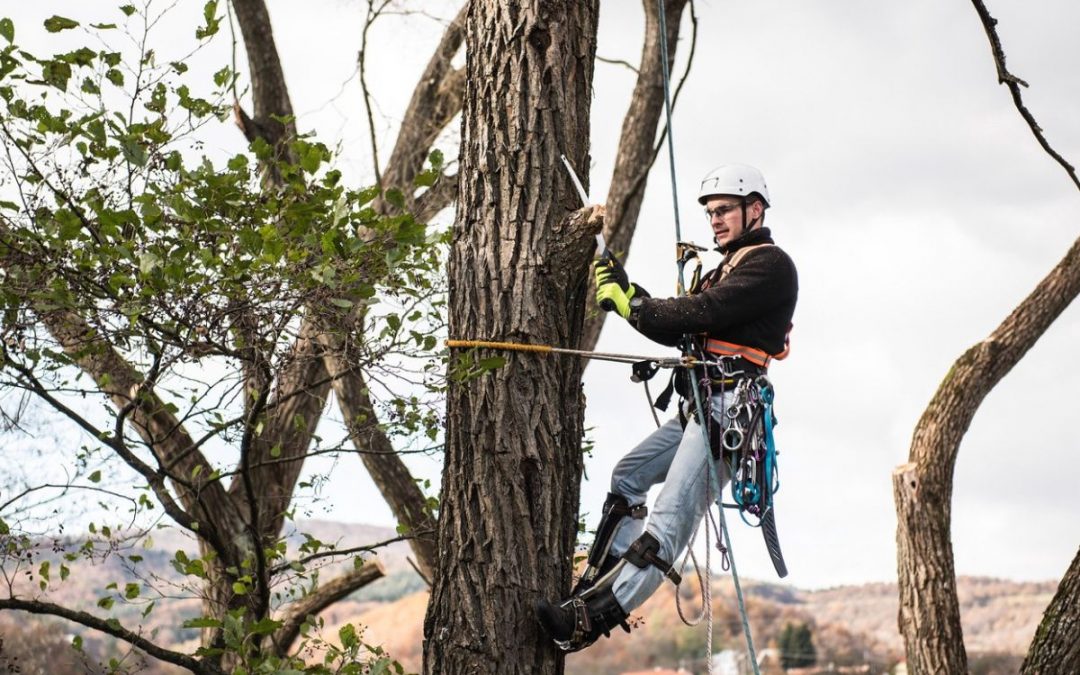Pruning a tree is important for several reasons. Young trees should be regularly pruned to maintain a healthy appearance. Heavy branches should be removed to prevent splintering and breakage. Additionally, a tree that is suffering from disease or pests may need pruning to control growth before limbs drop.
Table of Contents
What branches should be pruned on young trees?
Trees need to grow enough leaves to survive. They must also provide food for the roots and trunk. If too much foliage is removed, it can starve the tree and result in reduced growth and health. A good rule of thumb is to keep about half of the foliage on the lower two-thirds of the tree.
Pruning young trees is an important part of tree care, as it can prevent structural defects and damage later on. It is an easy process that will save you money on expensive structural corrections. It is important to consult an arborist before pruning, though. Young trees should not be pruned with more than 15% of their canopy.
Young trees should have one dominant leadership branch that grows upward. Secondary branches should be kept low or not compete with the dominant leader. Double leaders are unhealthy and can result in structural weakness. If the tree has two leaders, remove them when they are small.
How Pruning Stimulates Growth
The degree to which pruning alters the structure of a tree’s growth depends on the type of cut made. Thinning cuts, on the other hand, reduce the number of limbs on a tree and help light penetrate. Thinning cuts are used during maintenance pruning, and they usually involve reducing limb length to direct the growth of new shoots.
In general, pruning causes new growth by triggering hormones in the plant. Branches and stems grow at an increased rate after a pruning cut because the apical meristem is no longer exposed. The most common way to prune a tree is to cut it off just above a leaf node. This cut triggers growth of side buds and makes the limb or branch grow much stronger than before.
Besides stimulating growth, pruning also prevents insects and diseases from invading the tree. A tree that is weakened by insect infestations or tree diseases will produce little fruit. The removal of dead limbs may even spread into your home, making pruning a good means of controlling pests.
How to Prune to Encourage New Growth
Pruning trees is a fundamental part of tree care. Pruning is a process that involves removing unwanted, diseased, and dead branches from a tree. It can help to encourage healthy, new growth higher in the tree. The process can involve removing several branches at once or gradually trimming a tree over several years. A good rule of thumb is to remove no more than one-fourth of the crown of the tree in a single year.
Pruning is often done late in the summer to promote new growth, but late pruning can cause new growth to be stunted or destroyed by cold weather. It’s also important to remove dead or damaged limbs to prevent insect and disease problems. When pruning trees, it’s best to start early.
Branches should be pruned at a 45 degree angle to encourage new growth. When cutting a branch, make sure not to cut through the stem. This will keep the branch and stem tissues separate and will prevent decay.
How to Control Growth with Pruning
Pruning a tree can be a valuable tool in managing the size of a tree. By removing dead or damaged branches, you can promote healthy new growth. Proper pruning techniques can also reduce the size of your tree and bring more sunlight into your yard. Pruning can also help improve the health of your tree, which can reduce stress on the entire system.
The most important step in pruning a tree is to identify the dominant leader stem and prune the rest of the branches away from it. Ideally, a tree should have only one dominant leader stem. This stem is the tallest branch of the tree. Secondary branches should not outgrow this stem and should not grow larger than half its diameter. If a tree is displaying double leaders, it is best to remove one of them to prevent structural weakening. The other competing leadership branch should be bent downward to slow growth. In addition, pruning a tree requires trimming the branches away from the trunk.
Proper pruning techniques will encourage flowering, healthy new growth, and air circulation. Proper pruning will also help maintain the desired shape of your tree. However, pruning should be done properly for each type of plant, so make sure to learn about its specific needs. Pruning can also be helpful for plants damaged by pests. When pruning, make sure to do it at the right time of year. Pruning a tree at the wrong time can cause the plant to become susceptible to secondary pests.

Do newly planted trees require pruning?
When you plant a tree, it is best to prune it only if a branch is dead or damaged. The reason for this is that pruning a young tree will slow down the growth of the root system. Pruning a young tree also discourages the development of new leaves and buds. Leaves are important to the growth of a tree because they provide food for the growing roots and they stimulate the formation of new roots.
The length of a branch fault will determine whether a tree needs pruning. The length of a branch fault after planting should not exceed one metre (36 inches) in length. In addition, poorly attached branches will grow larger and cause wood decay over time. To prevent such problems, pruning should be done in the first year of planting.
After the first year after planting, a tree will not need any pruning. However, pruning a tree after this time will ensure it develops a strong central trunk and evenly spaced branches. If you have staked your tree for support, it should be removed after one to two years. Avoid using staking kits on newly planted trees, as they may kill the plant. Additionally, some trees will need bark protection.
How should larger limbs be pruned?
There are several techniques for pruning trees. First, prune the larger branches to a lateral branch. This will reduce the overall width of the tree and encourage new growth to emerge from the bud. The next step is to thin the branches so that they conform to the natural shape of the tree. For this purpose, you should trim the branches to a 60-70 degree angle from the trunk.
Another way to prune a tree is to trim off suckers, or weak growths near the trunk. These are not desirable branches and will detract from the tree’s shape. Secondly, remove dead branches that are too close to the home. When pruning a tree, do not cut off more than 25% of its branches.
In addition, prune damaged limbs to promote new growth. Branches should not touch each other because this creates a chafe line and can be a pathway for insects and disease.
Do the cut ends need to be coated with tree paint
To help a tree grow, the cut ends should not be coated with tree paint. This is counterproductive and may actually hurt the tree. Tree paint, which is often made from latex, can trap moisture and cause decay or fungus. Rather, pruning the tree promotes natural healing and discourages the growth of regrowing branches. If you’re unsure of how to prune your tree, consult a professional arborist.
Tree wounds are often ragged. They may occur during branch breakage or trunk scrapes. If they’re not too deep, they can be repaired with a sharp knife. Cuts should be made with the bark tight and elongated. You shouldn’t apply wound dressing to a tree wound. Tree wounds contain their own natural mechanisms to discourage decay organisms and deter insects and disease.
Some people use tree paint to protect their cuts and to prevent the spread of disease. This technique was once standard, but it is now considered preferable to leave the wound untreated. In some cases, tree wounds can become infected with an unknown disease.
Conclusion
Pruning a tree is a crucial part of caring for it. It lowers the height of a tree, which helps it receive more sunlight. This light is necessary for some species to develop their fruit properly. An unpruned tree tends to have dense growth, which limits air circulation and can promote disease.
Pruning a tree should be done carefully. While removing most of the foliage is necessary to prevent the tree from being unbalanced, it is generally not recommended when the tree is in a poor state, has DDD, or is suffering from decline. In addition, the process removes some of the tree’s photosynthetic area and can lead to the tree dying.
The second cut should be made about 15 inches from the trunk. This removes most of the branch, and the third cut is made at the ridge of the bark. This allows for more precision and prevents damage to the bark.

